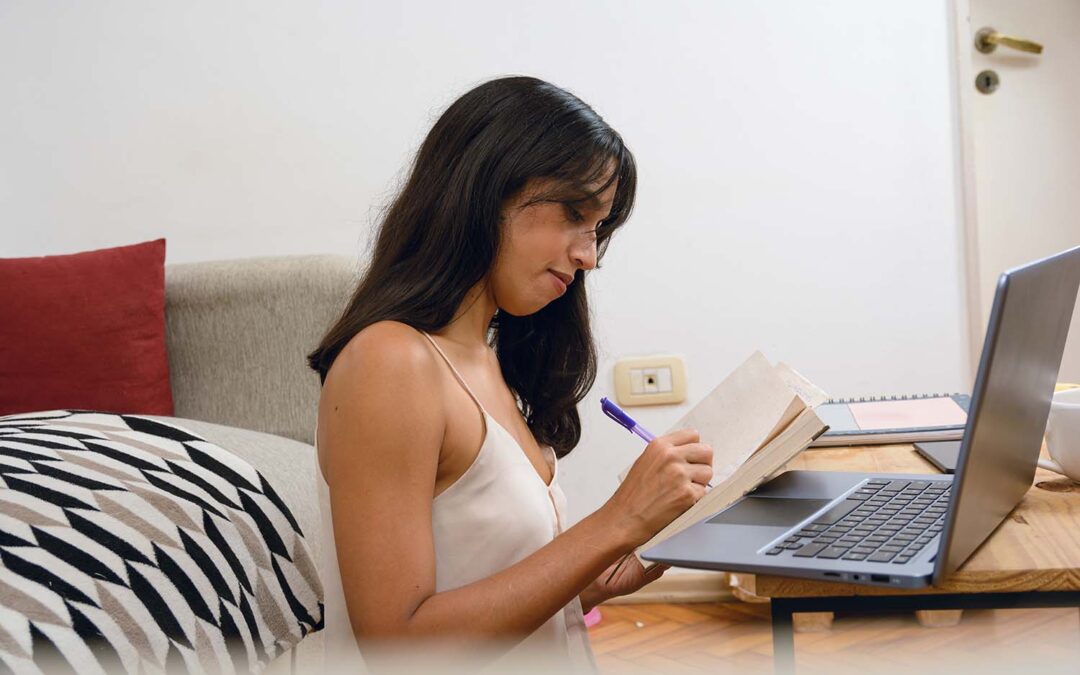You’ve been learning Spanish for weeks, and you’re pretty confident—until someone actually speaks to you and your brain suddenly flies for vacation. If your idea of practicing Spanish is talking to your dog or mumbling “¿Dónde está la biblioteca?” in the mirror, you’re not alone. Starting conversations in a new language can feel awkward, but it doesn’t have to be. Even as a beginner, there are fun, low-pressure ways to start speaking Spanish daily—and yes, even your dog can help (kind of). So in this article I’m going to explain how to practice Spanish conversation and why it’s an essential part of learning a new language!
Why Practicing Spanish Conversation is Essential
When it comes practicing a language, there are generally two main types of practice: conversational, and passive. When passively practicing, you are engaging with the content passively. This means that you are studying the language in official capacity rather than engaging with it on a more casual, conversational level. You can think of passive learning as studying flashcards, reading a textbook, watching video lessons, etc. There are strengths to studying in a passive setting (like with grammar), but to really understand the conversational side, you need to be speaking more casually. So how can you practice Spanish conversation effectively? Let’s break down some ways:
1. Start Small: Practice Spanish with Yourself
Starting small is a great way to begin your conversational practice with Spanish. You can begin by thinking in Spanish, narrating daily tasks, or speaking to yourself in front of a mirror. Utilizing these techniques is a great way to get comfortable engaging with the language on a more casual level before heading out into the real world. Additionally, you can utilize tools like a thought journal or voice notes to keep track of your progress and listen back to how you sound. It takes a while to be fully comfortable with Spanish on a conversational level, but these techniques will help you ease into engaging with the language daily. You’ll want to have a fundamental understanding of the basics of Spanish though before doing this to avoid bad habits forming.
2. Conversation Partners
Practicing with yourself, while a great way to get started, has its limitations. Once you begin feeling comfortable thinking and talking to yourself in Spanish, it’s time to find some conversation partners. Studying with a friend or family member is the best way, but if you are solo in learning Spanish, you can look into language exchange partners through Tandem, HelloTalk, and ConversationExchange. These applications connect you with a global language learning community in which you can practice with other users who are learning Spanish. It’s important to note that when using an app, you’re not getting the face-to-face connection you would otherwise get with an in-person partner but it’s still a stress-free way to get some conversational practice!
3. Practice Spanish Through Online Tutors
One of the best (and flexible) ways to practice Spanish is through tutoring. With services like ours, students are able to schedule personalized tutoring time and have a lesson entirely remote from the comfort of their own home! This is a great opportunity for students in grades 5 – 12 who want extra practice in Spanish or are maybe having difficulties in their Spanish class. An important note is that tutoring cannot replace a classroom setting. This should always be considered as a supplement to other lessons that you or a student is taking.
4. Using Media to Practice
Another great way to give yourself some conversational practice from the comfort of home is to mimic native speakers from shows, podcasts, and YouTube. There are hundreds of great conversational practice videos on YouTube where you can begin practicing today to get comfortable with the language. When shadowing an individual, it can actually improve your own pronunciation for Spanish. The downside of this technique is that you’re not getting direct feedback while you’re learning. This is large in part because you’re talking to a screen instead of an individual. So, like with the previous techniques, it’s important to use this as a supplement to avoid forming bad habits.
The Importance of Forming Good Habits
On the subject of habits, it’s essential to form good habits early on. Good habits are formed with a strong foundation of Spanish, and can include things like: studying passively everyday, thinking in Spanish, having a tutor, etc. When utilizing all of the different strategies discussed earlier, I am convinced that you’ll start to see significant progress in a shorter amount of time. If you’re interested in getting on board with a tutor, I highly recommend checking out our scheduling page. All of our tutoring sessions are one-on-one and taught remotely by private school teachers—so you know you’re getting the best tutor possible. Thanks for reading and let me know in the comments what strategies you’re trying and how your Spanish progress is coming along! ¡Adios y gracias por leer!

